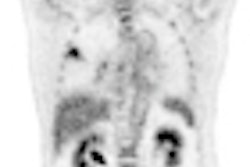CHICAGO - Experts involved in the use of ionizing radiation for diagnostic purposes -- clearly embracing a "better safe than sorry" approach -- outlined a series of measures aimed at reducing the potential risk of imaging studies causing cancer in patients.
The special panel -- noting a sevenfold increase in the use of radiation-based imaging in the past 25 years -- said the initiative was to ensure that patients were appropriately selected for imaging studies and that those studies were performed with the least level of radiation required to perform adequate diagnostic testing.
"The growth of medical imaging has yielded important and life-saving benefits for millions of people," said Mary Mahoney, MD, professor of radiology and director of breast imaging at the University of Cincinnati Medical Center, and the moderator of the panel-based press briefing at the 2010 RSNA conference.
However, she cautioned that "overutilization of medical imaging can expose patients to unnecessary radiation."
Despite the growth in imaging studies since 1980, a similar rise in cancer cases or deaths cannot be readily observed in the U.S., said Christoph Wald, MD, PhD, executive vice chairman of the department of radiology at the Lahey Clinic in Burlington, MA, and associate professor of radiology at Tufts University in Boston.
That, however, has not lessened concerns about the risks, he said, often described in blaring headlines in newspapers and on broadcast media.
"There is a theoretical risk," said William Hendee, PhD, professor of radiology, radiation oncology, biophysics, and bioethics at the Medical College of Wisconsin in Milwaukee.
The main data regarding risk come from Japanese survivors of atomic bombs dropped on Hiroshima and Nagasaki in 1945. Individuals at the far edge of those blasts who absorbed about 50 mSv of radiation appear to have an increased lifetime cancer risk of 0.05%, he said.
A person undergoing a series of CT exams might reach that level of exposure, he said. Because the average American's lifetime risk of cancer is about 33%, exposure to 50 mSv of diagnostic ionizing radiation might increase that person's risk to 33.05%. He suggested that for an individual that risk might be negligible, but on the societal level it could be significant.
Whatever the impact might be, the panel said a coalition of the RSNA, the American College of Radiology (ACR), the American Association of Physicists in Medicine (AAPM), and the American Society of Radiologic Technologists (ASRT) is working to build upon the Image Gently campaign -- aimed at reducing exposure to children -- with the Image Wisely campaign, which aims to reduce radiation exposure among adults.
"Our charge is to raise awareness among providers of opportunities to eliminate unnecessary imaging exams and lower the amount of radiation used in necessary imaging exams to only that needed to capture optimal medical images," said James Brink, MD, professor and chairman of diagnostic radiology at the Yale University School of Medicine in New Haven, CT.
Step one of the program -- a pledge by imaging professionals to "Image Wisely" -- was promoted here at the RSNA meeting. The next step is to encourage enrollment by institutions into an accreditation process similar to that of the American College of Radiology, and a third step is to expand and participate in a Dose Index Registry, which could help providers understand how other institutions dose for various procedures.
"When we discuss 'imaging wisely,' we are saying that we want the right exam, performed in the right way; that clinicians use the most appropriate exam for the clinical problem, make sure the benefits outweigh the risks, and, if ionizing radiation is used, make sure the dose is appropriate," Brink said.
Hendee said there are various factors that contribute to overutilization of diagnostic imaging, including the fee-for-service payment system, the practice of self-referral, the practice of defensive medicine in avoiding malpractice suits, referring physician behavior, and often the wishes of patients who, armed with Internet advice, may seek specific studies.
"Care for our patients includes good communication about and good practice of safe and appropriate imaging," said Wald.
He suggested that patients arm themselves against unnecessary exposure by carrying a medical imaging history, so they have a record of what imaging tests they have received, and they can offer the information to doctors at visits to new facilities.
Wald said that in emergency situations, the benefits of appropriate x-ray imaging always outweighs the possible cancer risk, and even in nonemergency cases such as screening, safe use of radiation may prove life-saving -- for example, as has been shown with mammography for breast cancer. However, the benefits of screening may only help specific groups, he noted.
By Edward Susman
AuntMinnie.com contributing writer
December 2, 2010
Related Reading
ACR/RSNA launch national Image Wisely campaign, November 30, 2010
U.S. radiation concerns overdue: Siemens executive, November 29, 2010
Radiologists call for curbs on overuse of imaging, August 24, 2010
Radiology gears up for FDA radiation hearings, March 30, 2010
One-quarter of outpatient CT and MRI exams are inappropriate, March 1, 2010
Copyright © 2010 AuntMinnie.com



















